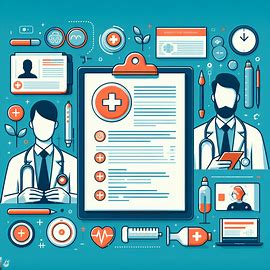Effective Email Communication and Etiquette for Healthcare Professionals
In today’s digital age, email has become a primary mode of communication in the professional world. The healthcare industry is no exception, with email being a critical tool for job applications, networking, and everyday correspondence. However, it’s essential for healthcare professionals to follow proper email etiquette to ensure effective communication and maintain a professional image. Here are some tips to enhance your email communication skills:
1. Use a professional email address
When sending emails related to job applications or professional matters, it’s crucial to use an email address that reflects your professionalism. Avoid using personal or unconventional email addresses. Instead, create a separate email account with a clear and recognizable name, such as firstname.lastname@gmail.com, to make a positive impression on potential employers or colleagues.
2. Write clear and concise subject lines
The subject line of your email should provide a quick summary of the content and purpose. Make it specific and relevant to ensure that recipients prioritize reading your email. For example, “Job Application: Registered Nurse Position” or “Request for Information: Medical Research Opportunity.” A well-crafted subject line increases the chances of your email being opened and addressed promptly.
3. Be courteous and use proper salutations
Always begin your email with a polite salutation, such as “Dear Mr./Ms. [Last Name]” or “Hello [First Name],” followed by a comma. It’s important to address recipients appropriately, especially if you are reaching out to professionals you haven’t met before. Using a respectful tone sets a positive tone for the rest of the message.
4. Use a professional tone and language
When composing your email, maintain a professional tone throughout. Be courteous, concise, and use proper grammar and spelling. Avoid using slang, abbreviations, or excessive exclamation marks, as they can diminish the professionalism of your message. Proofread your email before sending to ensure it is error-free and conveys your intended message accurately.
5. Get to the point and be concise
Keep your emails focused and to the point. Busy healthcare professionals often receive numerous emails and appreciate concise messages that get straight to the purpose. Avoid lengthy paragraphs or unnecessary details. Use bullet points or numbered lists to organize information effectively, especially when providing multiple points or seeking clarification.
6. Respond promptly and professionally
Reply to emails in a timely manner, particularly when communicating with potential employers or colleagues. Aim to respond within 24-48 hours, or even sooner if it’s an urgent matter. Even if you don’t have an immediate answer, acknowledge the email and let the sender know when they can expect a detailed response. Being prompt and professional reflects positively on your reliability and commitment.
7. Use appropriate email signatures
Include a professional and concise email signature at the end of your messages. Your signature should include your full name, professional title, contact information, and any relevant links, such as your LinkedIn profile or website. An email signature adds credibility and makes it easier for recipients to contact you outside of email if necessary.
By following these email communication and etiquette tips, healthcare professionals can enhance their professional image and ensure effective communication in today’s digital landscape. Remember, a well-crafted email can make a lasting impression and open doors to new opportunities.
Best regards,
Your Name
